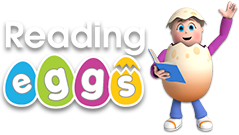So proud of A! Her club hosted a 3D Archery event over the weekend. She did a great job helping out and volunteering and she also ended up placing 1st in the senior barebow category 😉.
Tuesday, September 28, 2021
3D Archery Competition
Friday, September 24, 2021
Brainwaves: The Astute Goose Review
Ready to hear about another game?!? I have a fun game to share with you today from Timberdoodle, Brainwaves: The Astute Goose. This game originated in Germany and is manufactured by Thames & Kosmos and is geared for children ages 8 and older. It's also unique in that it is a 1-5 player game so it can be a single or multiplayer game - I love this flexibility. It can also be played in as little as 15 minutes ⏲.
What's included in our game? There are 25 suspect cards (featuring 5 colors, 5 clothing features and 5 animals), 6 number cards, 5 feature cards, 1 number die (with numbers 1-6), 1 feature die (indicates clothing color, clothing feature or animal companion), 1 small notepad and the rule booklet.
What's the object of the game? In The Astute Goose, players must identify a burglar that is hiding in a crowd. They will need to determine the color and style of his clothes along with what animal he is pictured with. Cards are claimed as players accurately remember the burglar. Whoever identifies the most burglars wins, that's it!
How do you play? All players receive a feature card that they place in front of them. The number cards are then placed on the table according to the difficulty desired.
Shuffle the suspect cards and place them in a face down deck in front of the players. Draw the needed amount of suspect cards (according to the difficulty) and place them face up in a row below the number cards. Players are given ~ 2 minutes to study and memorize the features of the suspects in the lineup as well as they can. After the 2 minutes, the suspect cards are flipped over so they are no longer visible. Game play always begins with the youngest player and moves around clockwise. The first player will roll both dice. The number on the die refers to the suspect card in that number position while the feature rolled on the feature die specifies which feature must be identified. The player needs to state their guess aloud and then secretly look at the card to see if they were correct. If they were right, they show the card to the other players and place it face down in front of them and keep it. If they are wrong the other players have a chance to give an answer (starting with the player on the left of the one whose turn it is). If no one gets the correct answer, the card is removed from the game. A new card is then placed in the lineup face up. Players must study it for a minute and then it is flipped over. Play continues on until there are no more suspect cards in the draw deck and someone rolls a die with an empty position. This might sound complicated but it's really not. It's an upgraded version of Memory that is constantly changing so it gets progressively harder as play continues.
D and E playing. D is concentrating on remembering all the information.I think the science behind this game is super interesting. Neuroscientists in Germany used The Astute Goose as a scientific study to see which brain functions are used when playing. They found that fluid intelligence, working memory and long-term memory were exercised in this game. The Astute Goose definitely requires concentration and attention to detail. I really like that it takes only a minute to learn and the difficulty can be adjusted. What a great find to have in our game arsenal!
Brainwaves: The Astute Goose is currently included in Timberdoodle's 4th grade curriculum kit and is such a fun brain-training memory game. This would definitely make a unique gift as well (and it works for teenagers).
Reading Eggs and Mathseeds from Reading Eggs Review
Disclosure: I received this complimentary product through the HOMESCHOOL REVIEW CREW.
G currently spends the most time in the Reading Eggs section. He loves all the activities.
Wednesday, September 22, 2021
Volleyball Tournament Champs
Miss
B and her volleyball team won 1st place in the gold bracket in their
tournament last weekend 🏆. I’m so proud of how hard they worked and how
loud the parents were at the championship match 📣 🏐 . Some games have been so exciting to watch this year, while others are harder. It was great to see all the girls improve their communication and their skills and have it all come together in the final match. What a great group of ladies. Go #15 and Go Royals!
Tuesday, September 21, 2021
Smart Games Cat & Mouse Review
If you read my blog then you know that we absolutely love Smart Games. I have another one to share with you today from Timberdoodle, Cat & Mouse! It is a single player game geared for children in 1st grade and beyond.
What's included?
This game includes a game board, 9 plastic maze tiles, and a challenge and solutions booklet. There are 48 challenges that increase in difficulty from Starter, Junior, Expert and Master.
How to play? First a player chooses a challenge from the booklet. The challenge will show them which connections they need to make (or not make) to complete or solve the puzzle. Next, they need to arrange the tiles on the game board that makes the proper connections without creating dead ends. There are many different solutions for each of these challenges which is unique for Smart Games (they usually have a unique solution per challenge). A few of the solutions are given in the challenge booklet on the reverse side of each challenge but there are a variety of ways to solve these puzzles.
Cat & Mouse encourages strategic planning, concentration, problem solving, visual and spatial insight and logical thinking. This game is currently included in Timberdoodle's 1st grade curriculum kit
and we highly recommend it!
Thursday, September 16, 2021
First Week Back at CoOp
Wednesday, September 15, 2021
Farmland Math: Town & Farm Edition Review
I have a fun preschool math program to share with you today from Timberdoodle, Farmland Math (Town & Farm Edition).
What's included in this Bundle? Our bundle includes a reversible table-top friendly mat, 72 soft rubber vehicle counters, 72 soft rubber barnyard buddy counters and a handbook with a plethora of math activities for your preschooler. The counters have six different shapes, six different colors (red, orange, yellow, green, blue and purple) and two sizes.
I really like that the mat is durable, foldable and wipes clean easily. On one side of the mat is a farm scene on which you can use the barnyard counters, while the reversible side is a town scene on which you can use the vehicle counters.
Farmland Math includes 36 weeks of math activities for preschoolers. It
covers various topics including counting from 1-5, colors, patterns,
more/fewer, numerals, shapes, logic, comparing, halves, and more! The
math concepts build on each other to help children not forget as they go
along. I have been using this program with G. I feel like he is
really past this in his math ability when looking at the topics above; however, he really enjoys it. It
doesn't take long and it is great at reinforcing early math concepts and solidifying the material.
It really is fun extra practice for him and he absolutely loves the
counters. He enjoys holding them and they are excellent free play
items. Gotta love hands-on resources. I love watching the younger boys use them in imaginative play
and see what they come up with, so fun!
Farmland Math is currently included in Timberdoodle's Preschool curriculum kit. If you are looking for a fun hands-on math program for your preschooler, this is definitely worth checking out!




















































